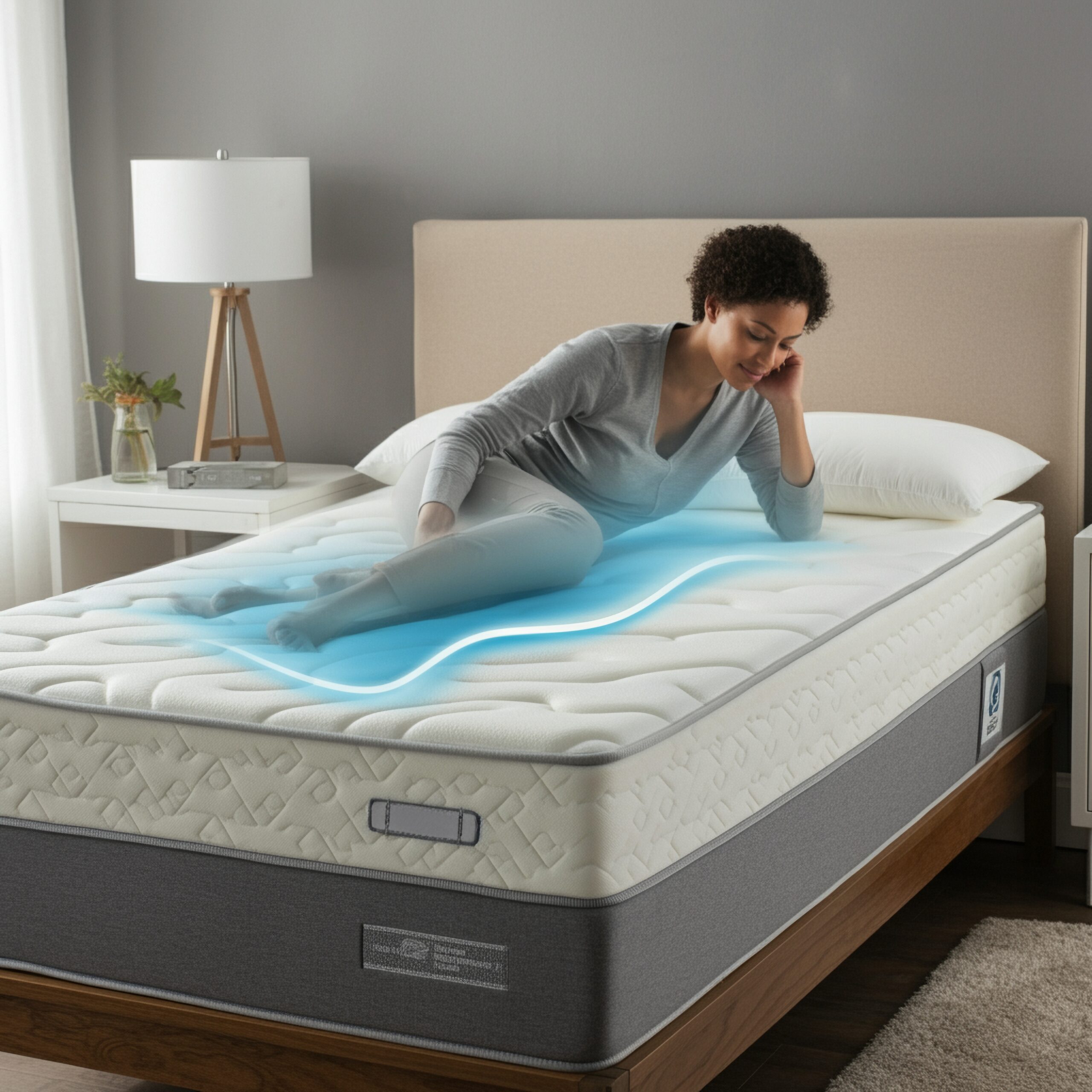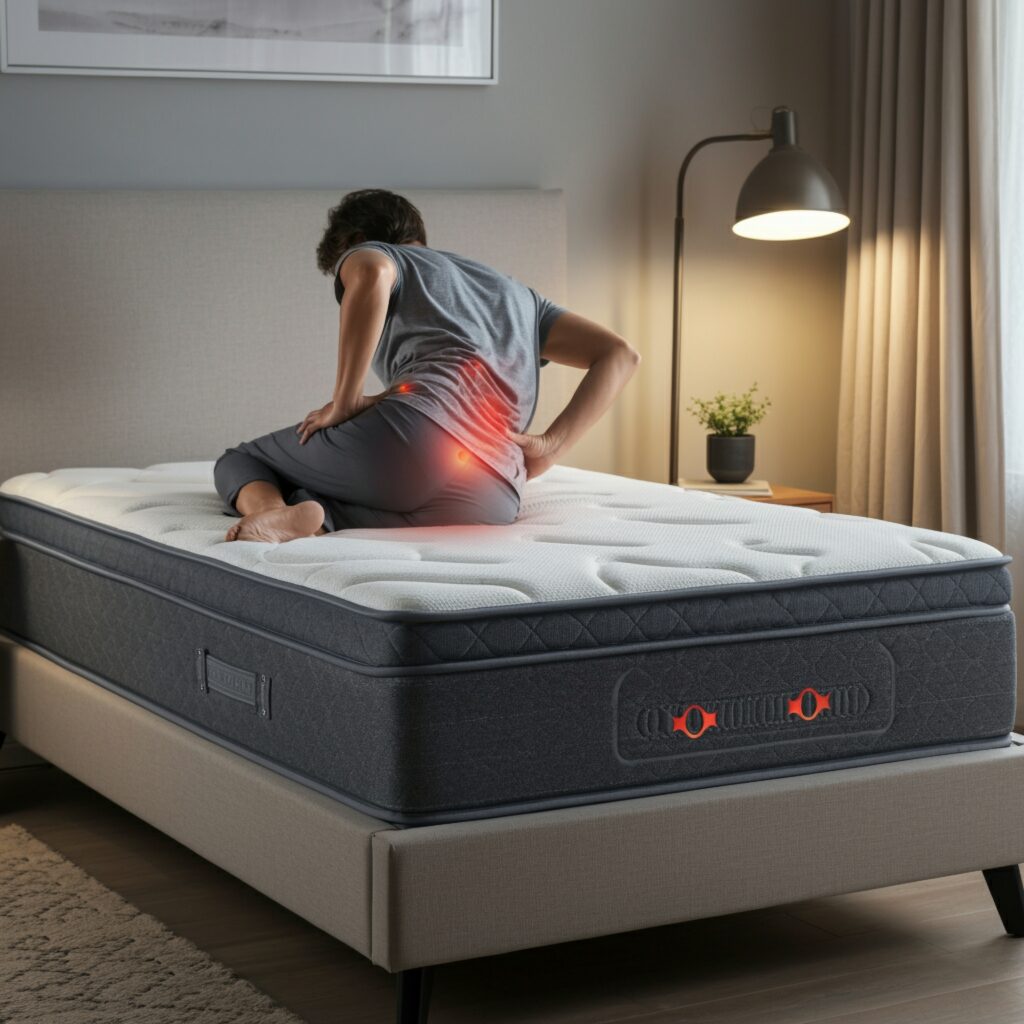
Memory foam mattresses are highly regarded for their ability to contour to your body, providing comfort and pressure relief. However, for some, these mattresses can cause or exacerbate back pain. This issue can arise due to sagging, improper firmness, or a mismatch between your sleeping style and the mattress. This article will explore why your memory foam mattress might be causing back pain and how to address these problems to improve your sleep quality.
Why Does a Memory Foam Mattress Cause Back Pain?
Sagging Over Time
Memory foam is designed to conform to your body’s shape, but over time, this material can lose its resilience, leading to sagging in the areas where you sleep most frequently. This creates uneven support, which can cause your spine to become misaligned, especially in the lower back, leading to discomfort and pain.
As the foam wears down, it may not spring back to its original shape, resulting in depressions in the mattress. These dips cause your body to sink deeper than intended, creating pressure on certain areas of your spine. To address this, rotating your mattress regularly can help distribute the wear more evenly. If your mattress has already developed deep indentations, using a mattress topper may offer temporary relief, but replacing the mattress may be necessary for a long-term solution.
Inappropriate Firmness Level
One of the most common reasons a memory foam mattress causes back pain is due to the wrong firmness level. If the mattress is too soft, it may not provide adequate support for your spine, allowing your body to sink too far into the foam. This can result in poor spinal alignment, leading to discomfort. Conversely, a mattress that is too firm can create pressure points in areas like the shoulders, hips, and lower back.
Choosing the right firmness level for your sleep style is critical. Side sleepers generally need a softer mattress to cushion the shoulders and hips, while back sleepers benefit from medium-firm mattresses that support the spine’s natural curve. Stomach sleepers usually require a firmer mattress to prevent their midsection from sinking, which could strain the lower back.
Incompatibility with Your Sleep Position
Your sleeping position plays a key role in how well your mattress supports your spine. Back and side sleepers often find memory foam mattresses comfortable due to the way they contour to the body. However, stomach sleepers may experience back pain because the mattress allows their midsection to sink too deeply, resulting in an unnatural spine curvature.
For back sleepers, placing a pillow under the knees can help reduce lower back strain and maintain a neutral spine. Side sleepers can benefit from using a pillow between the knees to keep the hips aligned. Stomach sleepers might try placing a small pillow under the hips to alleviate pressure on the lower back or consider switching to a different sleeping position if the pain persists.
Poor Support from Bed Frame or Foundation
Even the best memory foam mattress will not perform well without the right foundation. A weak or uneven bed frame can cause the mattress to sag prematurely, leading to discomfort. Many bed frames with wide-spaced slats may not offer the necessary support for a memory foam mattress.
To prevent back pain, ensure that your bed frame or foundation provides adequate support. Slats should be no more than 3 inches apart to maintain the integrity of the mattress. A solid platform bed or a dedicated foundation designed for memory foam mattresses is often the best choice.
How to Fix Back Pain from a Memory Foam Mattress

Rotate or Flip Your Mattress
If your mattress has started to sag or develop indentations, rotating it can help even out the wear. Most modern memory foam mattresses are not designed to be flipped, but rotating them every few months can prevent uneven sinking over time.
Use a Mattress Topper
A mattress topper can be a cost-effective way to adjust the firmness of your mattress. If your mattress is too soft, adding a firm topper can provide the support your spine needs. If your mattress is too firm, a soft memory foam topper can add cushioning to relieve pressure points.
Upgrade Your Bed Frame or Foundation
Make sure your bed frame or foundation is appropriate for your memory foam mattress. If the frame is sagging or the slats are too far apart, upgrading to a sturdier platform bed or purchasing a mattress foundation can improve the support of your mattress and reduce back pain.
Consider a New Mattress
If your mattress is older or has significant sagging, it may be time for a replacement. Memory foam mattresses typically last 7-10 years. Look for a mattress that suits your sleeping style and provides the proper level of support. Some modern memory foam mattresses come with zoned support layers, which offer firmer support in key areas like the lumbar region, reducing back pain.
Additional Tips for Reducing Back Pain
Stretch and Strengthen Your Back
Incorporating daily stretches and back-strengthening exercises can help alleviate back pain. Strengthening your core muscles also helps improve posture during sleep and throughout the day.
Use Proper Pillows
Choosing the right pillow for your sleep position can also help maintain spinal alignment. Back sleepers should use a pillow that supports the natural curve of the neck, while side sleepers benefit from thicker pillows to keep their head aligned with the spine. Stomach sleepers may need a thinner pillow or no pillow at all to reduce neck strain.
Maintain a Consistent Sleep Schedule
A consistent sleep schedule helps improve the quality of your sleep. Going to bed and waking up at the same time each day helps regulate your body’s sleep cycle, reducing discomfort and improving your overall well-being.
Final Thoughts
Back pain caused by memory foam mattresses is often due to improper support, sagging, or a mismatch between your sleeping position and the firmness level of the mattress. By rotating your mattress, using a mattress topper, or adjusting your bed frame, you can reduce discomfort. If these measures don’t work, upgrading to a new mattress that provides better support may be necessary. Taking care of your body’s needs with the right sleep environment can lead to pain-free, restorative sleep.
